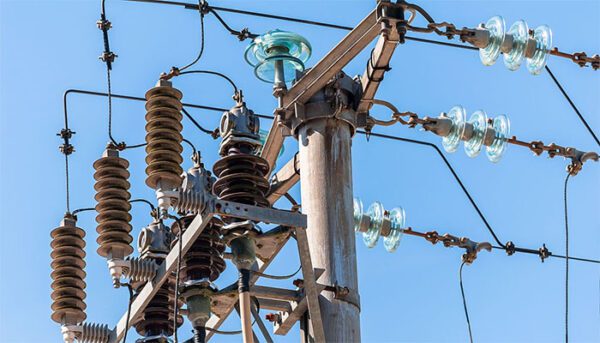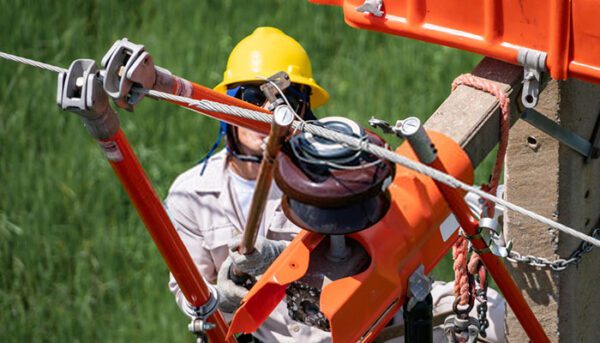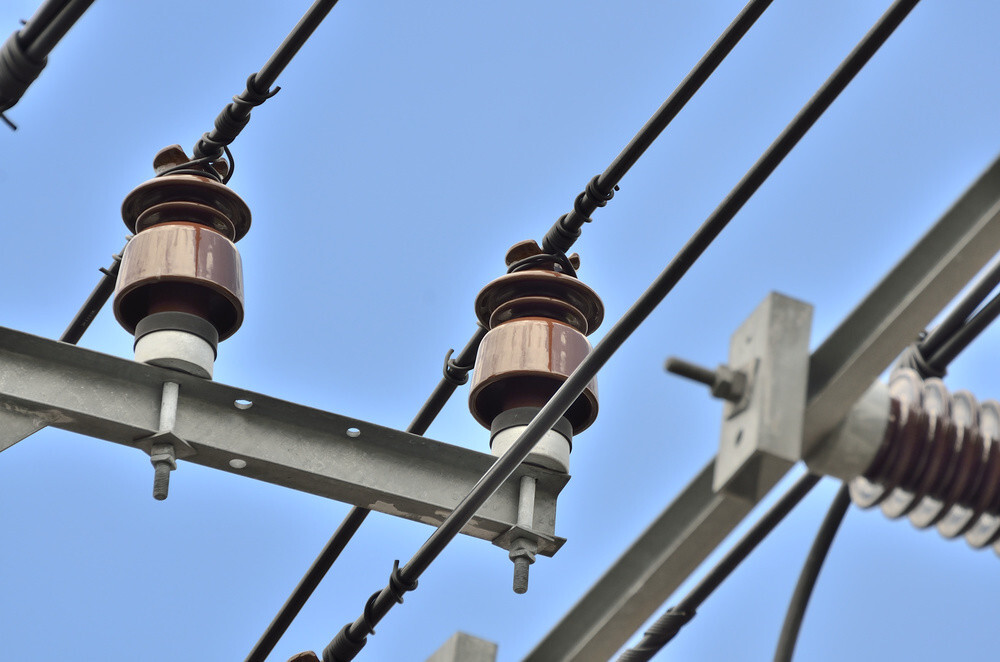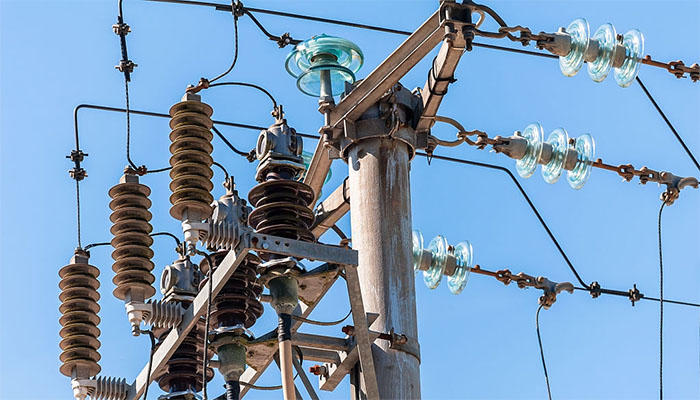Pin Insulator
- Description
- Specification
Description
The pin insulator is a type of distribution line insulator, which is mounted to an electrical cross arm of the utility pole with the support of various bolts or pole top pins.
Pin insulator is widely used in power distribution systems with the features of low price, high mechanical strength, simple design, and easy maintenance.
Pin type insulators are assembled on top of the electrical poles or towers. The conductor was fixed to the grooves on the upper end of the insulators, with the help of the top tie.
Pin type insulators can be made of ceramic, porcelain, polymer, glass, or silicon rubber.
For lower voltages one-piece type of insulators are enough, For the application of higher voltage, stronger pin type insulators such as two pieces or three pieces types are needed.
Due to its design, It is generally used for the voltage 11kv up to 33kv, pin Insulators beyond a voltage of 33 kV will be bulky and expensive.
If you have any questions about the pin insulator, don’t hesitate to send an email to us now.
Table of Contents
Pin Insulator Complete Buying Guide

insulators on the utility pole
One of the devices that you can use to keep safe and streamline the operation of the transmission line is the pin-type insulator. Whether it is a porcelain pin insulator, vintage insulator pin, polymer pin type insulators, or glass pin insulator, you should have the right information about the device.
In this article, you are going to learn about the pole top pin insulator schematic and how to choose the right one for the transmission line.
What is a pin insulator?

A pin insulator is a pole line device that separates a conductor from a physical supporting structure such as a wooden pole or transmission tower.
As the name suggests, a pin insulator is made of a non-conducting material. In most cases, it is either porcelain or glass.
Pin insulators can be installed either as a single unit or multiple units depending on the requirements of the pole line. The number of insulators will also depend on the voltage of the pole line.
Unlike the strain insulator and suspension insulators, the pin insulator is directly attached to the physical support and not just suspended to the conductor.
A pin insulator features an umbrella-like shape and design. This iconic shape of a pin insulator secures the attachment to the conductor and remains stable regardless of the external conditions.
The design also prevents the lower sections of the insulators from getting wet as this can hinder its effectiveness. The ridges on the sides enhance further protection from the rain.
Essential properties of a pin insulator

While looking for pole line insulators, ensure that it has the following basic properties:
-High mechanical strength: The pin insulator should be strong and sturdy enough to withstand mechanical forces such as wind load.
-Excellent electrical resistance: The resistance of the insulator to electricity should be high to prevent voltage leakage.
-Non-porous: The pin insulator material should not permit any impurities to get in and disrupt the performance of the insulator.
-Should have a high ratio of puncture strength to flashover.
How does a pin type insulator work?

When it comes to the installation, the top of the insulator is connected to the conductor while its base is connected to the earth or any supporting structure. This connection allows the insulator to remain stable all the time.
Normally the insulator is subjected to the mechanical stress that is exerted between the earth and the conductor. This is mainly because the insulator is positioned between these two structures.
The distance that exists between the conductor, the earth, the insulator, and the electrical discharge is known as the flashover distance.
In case the insulator gets wet due to rain or humidity, the flashover distance will decrease. This increases the electrical conductivity of the insulator hence decreasing its efficiency.
The umbrella-shape of the insulator eliminates such a problem by ensuring that the base area of the insulator does not get wet.
Also, the upper petticoat of the insulator is well-inclined to ensure that the flashover remains high even when it rains. At the end of it, there will be minimal voltage disturbance.
The conductor will remain suspended freely from the pole or any other relevant structure.
What are the applications of the pin insulator?
 Does my power transmission line need a pin insulator? This is a question that you are likely to ask before you buy this transmission line accessory.
Does my power transmission line need a pin insulator? This is a question that you are likely to ask before you buy this transmission line accessory.
Pin insulators are ideal for power transmission lines that are rated up to 33kV. They are also applicable to the intermediate poles that are on the straight run.
A pin insulator can also be used in place of a suspension insulator. Instead of using two suspension insulators, their place can be taken by a pin insulator.
Why are pin insulators not used for power transmission lines above 33kV? The main reason is as the voltage goes up, the insulators become inefficient and also uneconomical.
Advantages of pin type insulators
Numerous benefits come with using pin insulators on the transmission line. These advantages include:
-High mechanical strength hence cannot be easily affected by the forces acting against the transmission line.
-The insulator a significant creepage distance hence guarantees the safety of the transmission lines. Creepage distance is the shortest distance between two electrodes that are positioned along the surface of an insulator.
-A pin insulator can be installed at any position. You can install it either vertically or horizontally and it will still function as usual.
-The insulator has a simple design hence easy to install and maintain.
-Pin insulators are suitable for high-voltage power transmission of up to 33kV. However, these insulators may not be suitable for low voltage lines or beyond 50kV.
Pin insulator manufacturer in Vietnam: Powertelcom
Thinking of where to buy a pin insulator? You should consider choosing a reliable pin insulator manufacturer in Vietnam.
Buying from the best manufacturer comes with an array of benefits. First, you will be assured of quality pin insulators for the pole line. These are insulators that are built of quality materials and designed to the utmost precision.
Secondly, a reliable insulator manufacturer will sell the product at reasonable prices. If you are looking for an affordable pin insulator, choose a reliable manufacturer and you will get it at a reasonable price.
Also, we cannot overlook the fact that the best pin insulator suppliers offer excellent customer services. You can even request for custom pin insulator and they will deliver it within a record time.
At Powertelecom, we are a trusted pin insulator in Vietnam. We deal with different types of pin insulators that will meet your pole line needs. We not only manufacture this pole line accessory but also design so that they have the perfect dimensions.
We have several years of experience in this field and the quality of our work is known. We strictly align our pin insulators according to international standards.
Contact us and we will work together to ensure that you get the best pin insulators for sale.
FAQ
What is a pin Insulator?
The pin insulator is a type of distribution line insulator, which is mounted to an electrical cross arm of the utility pole with the support of various bolts or pole top pins.
What is the application of pin insulators?
Pin insulators are ideal for power transmission lines that are rated up to 33kV. They are also applicable to the intermediate poles that are on the straight run.
How to install a pin insulator?
Pin type insulators are assembled on the top of the electrical poles or towers. The conductor was fixed to the grooves on the upper end of the insulators, with the help of the top tie.
What is the advantage of the pin insulator?
- Simple design
- High mechanical strength
- Low price
- Easy maintenance.

porcelain pin insulator
| Type | 1 | 2 | 3 | 4 | 5 | 6 | ||
| Main Dimensions(mm) | H | 137 | 165 | 244 | 185 | 255 | 320 | |
| h | 48 | 52.63 | 52.63 | 52.63 | 52.63 | 52.63 | ||
| D | 152 | 230 | 279 | 170 | 205 | 240 | ||
| d | 18.29 | 27.78 | 27.78 | 76 | 76 | 76 | ||
| d1 | 13 | 19 | 19 | 27.78 | 27.78 | 27.78 | ||
| R1 | 12.7 | 14.3 | 13 | 16 | 16 | 16 | ||
| R2 | – | – | – | 16 | 16 | 16 | ||
| Rated Voltage(kv) | 15 | 22 | 33 | 15 | 22 | 33 | ||
| Creepage distance(mm) | 298 | 432 | 630 | 432 | 673 | 851 | ||
| Low-Frequency Punctur Voltage Average(kv) | 135 | 145 | 185 | 150 | 200 | 210 | ||
| Minimum Flashover Voltage | Power-Frequency(kv) | Dry Withstand | 80 | 100 | 135 | 100 | 125 | 140 |
| Wet Withstand | 55 | 60 | 85 | 65 | 95 | 110 | ||
| 50% Positive Impulse(kv) | 130 | 160 | 185 | 150 | 190 | 210 | ||
| Withstand Voltage | One minute power-frequency(kv) | Dry | 70 | 90 | 110 | 90 | 110 | 125 |
| Wet | 50 | 55 | 75 | 60 | 90 | 100 | ||
| Impulse(kv) | 110 | 150 | – | 140 | 180 | 200 | ||
| Radio-Influence Voltage Data | Test Voltage to Ground(KV) | 15 | 22 | 30 | 22 | 30 | 44 | |
| Maximun RIV at 1000KHZ(kv) | 8000 | 12000 | 16000 | 12000 | 16000 | 25000 | ||
| Bending Failing Load(kn) | 11 | 11 | 13 | 11 | 11 | 11 | ||
| Weight(kg) | 2 | 4.5 | 11.5 | 5 | 10 | 13 | ||









